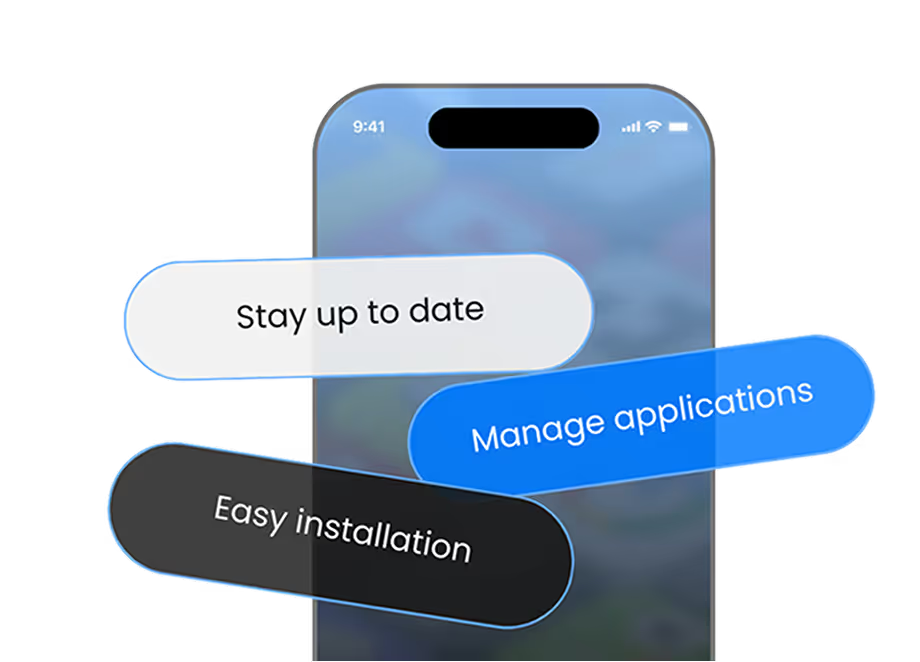.png)
Every app team eventually faces one tricky question: should you force users to update or let them choose when to? It’s a decision that goes beyond just development; it affects user experience, app stability, and even business outcomes.
You might have released a new version fixing a payment bug, updated your API, or changed your compliance logic, yet thousands of users are still running old builds. These outdated versions often cause unexpected crashes, broken flows, and security vulnerabilities.
While forcing users to update keeps everyone on the same version, it can also interrupt their experience. On the other hand, giving users flexibility sometimes leads to version fragmentation and inconsistent app behaviour.
Finding the right balance between control and convenience is what separates a well-managed mobile app from one constantly firefighting version issues. That’s where AppSync by AppsOnAir comes in, helping you manage both forced and flexible updates smartly, without touching app store submissions or code-level configurations.
Understanding the Update Dilemma
Most app teams want users to stay on the latest version, but in reality, that rarely happens. Many users ignore update prompts, delay installation due to limited data, or simply skip notifications.
This creates what’s known as version drift, where your user base is fragmented across multiple builds, each behaving slightly differently. It complicates testing, increases support requests, and makes it harder to roll out new features consistently.
So, what’s the solution? You can take one of two paths: force updates or offer flexible updates. The key is knowing when to use each.
Forced Updates: When Stability Can’t Wait
A forced update requires users to install the latest version before continuing to use the app. It’s non-negotiable and often appears as a blocking screen that redirects users to the store or installation page.
Forced updates are typically used for critical scenarios. Imagine a banking app that discovers a vulnerability, or an e-commerce platform that changes its checkout API. Allowing old versions to operate could expose data or cause failed transactions.
The advantage of forced updates is obvious: complete consistency. Every user runs the same version, which means fewer bugs, fewer support issues, and zero compatibility problems. It’s also the most reliable way to ensure compliance in industries like fintech, healthcare, and enterprise mobility, where regulation demands apps stay current.
However, this approach isn’t without drawbacks. Forcing an update during a peak moment — say, while a user is booking a ticket or placing an order — can cause frustration. Poor timing or unstable releases can drive users away instead of improving retention.
That’s why forced updates must be used strategically, reserved for high-impact fixes, security patches, or structural changes that demand immediate action.
Flexible Updates: The Gentle Nudge Approach
The opposite of a forced update is a flexible update, where users are notified about a new version but can continue using the app if they choose not to update immediately.
This approach focuses on user experience first. It’s ideal when updates include visual changes, minor performance improvements, or additional features that don’t affect the core functionality of the app.
For example, a travel app releasing a refreshed interface or a new destination filter doesn’t need to block users from using the older version. Instead, it can show a subtle reminder like “Update available for the best experience,” allowing users to decide when to proceed.
The benefit here is maintaining engagement; users stay in your app longer, and they don’t feel forced into an action. But the trade-off is consistency. Your analytics may show slightly different behaviours between old and new versions, and bug reports may become harder to reproduce.
That’s where the flexibility of AppSync shines; it allows you to blend both approaches based on urgency, release type, or platform.
When to Force and When to Flex
There’s no one-size-fits-all update policy. The smartest teams use a mix of both depending on the situation.
If you’re fixing something that affects security, transactions, or data integrity, you should absolutely enforce a forced update. It’s better to briefly inconvenience users than to risk critical errors or lost trust.
But if your update includes non-critical changes, UI enhancements, marketing content, or performance optimizations, giving users flexibility builds goodwill and smoother engagement.
The balance lies in timing and context. An ideal strategy uses forced updates sparingly, while most releases follow an optional, user-friendly approach.
And that’s exactly what AppSync helps automate, switching between both strategies seamlessly, without code changes or separate builds.
How AppSync Simplifies Update Management
Managing updates manually can quickly turn chaotic, especially if you support multiple platforms and release cycles. AppSync was designed to remove that chaos by giving teams total control over how and when users update, all from one unified dashboard.
With AppSync, you can instantly enforce a critical update when a major issue occurs, ensuring no one continues using an outdated version. At the same time, you can schedule optional prompts for minor releases that encourage users to update without forcing them.
AppSync also includes maintenance mode scheduling, letting you display downtime messages during planned backend updates. This keeps users informed and prevents confusion or poor reviews when servers are temporarily unavailable.
One of the most powerful features of AppSync is its version and platform-specific rules. You can decide that Android users on version 1.0 must update immediately, while iOS users can continue on 1.0 for a few days longer. This precision gives you the flexibility to roll out updates gradually or respond to platform-specific issues efficiently.
And since AppSync is SDK-backed, all of this logic is handled remotely. That means you don’t need to hardcode version checks or push a new binary just to adjust update behaviour. It’s all managed from your AppsOnAir dashboard in real time.
Plus, it works seamlessly across Android, iOS, React Native, and Flutter, ensuring consistent update control no matter what stack your team uses.
Read More: How AppsOnAir’s AppSync Works?
Why Update Strategy Matters More Than Ever
In 2025, mobile apps are expected to move as fast as web products. Users expect instant fixes, continuous improvements, and zero downtime. But unlike web apps, mobile releases depend on app stores, which means every delay in review or user adoption slows your growth.
Having a clear update strategy ensures your app stays consistent, secure, and compliant, while maintaining a great user experience. It’s not just a technical choice anymore; it’s a business decision that affects retention, trust, and long-term scalability.
AppSync enables that control, giving your team the tools to enforce updates when needed, stay flexible when it makes sense, and communicate clearly with users during maintenance or downtime.
Conclusion
Managing updates isn’t just about pushing new versions; it’s about maintaining trust, performance, and control over your mobile ecosystem.
Forced updates keep your app safe and reliable; flexible updates keep your users happy and engaged. The real magic happens when you can do both, intelligently, contextually, and without engineering friction.
With AppSync by AppsOnAir, mobile teams finally get that power. You can schedule updates, enforce compliance, and maintain user satisfaction, all from one central dashboard, with zero code changes.
In short, it’s how smart teams stay ahead without slowing down.















